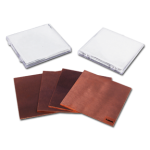Filters
Products
- Friskers
- General Purpose - Digital
- General Purpose - Analog
- Computerized
- Data Loggers
- Specialized Meters
- Geiger Counters
- Intrinsically Safe
- Ion Chambers
- Isotope Identifiers
- microR / microSv Meters
- Extended Reach microR / microSv Meters
- Neutron Meters
- Pocket-Size Meters
- Scaler-Ratemeters
- Stretch Scopes
No subcategories
No subcategories
No subcategories
No subcategories
No subcategories
No subcategories
No subcategories
No subcategories
